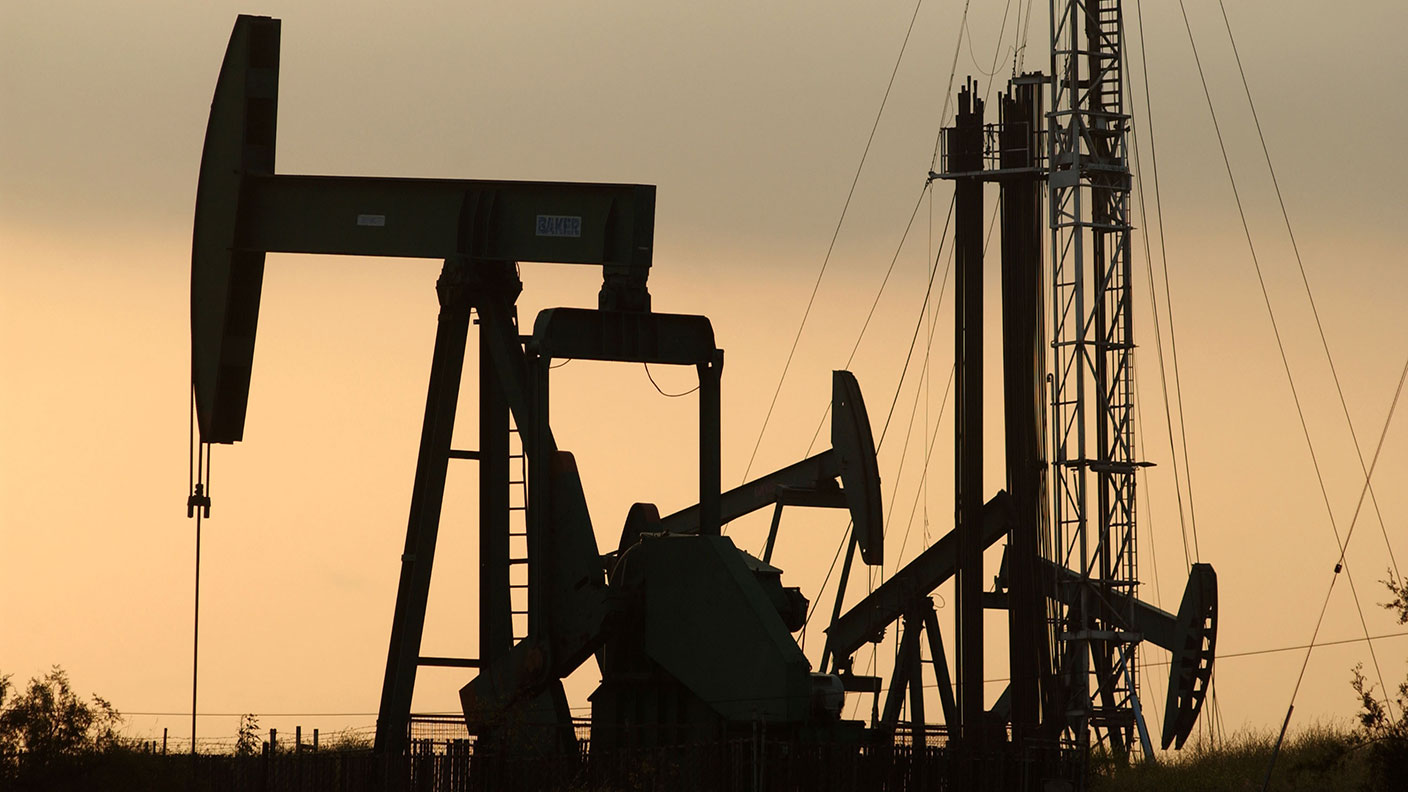Is the oil market heading for a supply glut?
Many people assume that the high oil price is here to stay – and could well go higher. But we’ve been here before, says Max King. History suggests that supply will increase to more than meet demand.

After the oil price multiplied in the 1970s, it was universally assumed that it would continue to rise relentlessly.
BP’s annual review of the market in 1970 had stated that the world had just 25 years of reserves left, so rising demand and limited supply meant that prices could only go one way.
In reality, higher prices curbed consumption by encouraging a drive to energy efficiency; new discoveries were made and extraction rates improved. Supply exceeded demand and the oil price crashed.
MoneyWeek
Subscribe to MoneyWeek today and get your first six magazine issues absolutely FREE

Sign up to Money Morning
Don't miss the latest investment and personal finances news, market analysis, plus money-saving tips with our free twice-daily newsletter
Don't miss the latest investment and personal finances news, market analysis, plus money-saving tips with our free twice-daily newsletter
By 1995, when the oil was supposed to run out, BP was estimating that there were 50 years of reserves left.
Is there a lesson in all of this for today?
This isn’t the first oil price spike we’ve had to weather
The oil price surged again in 2008, reaching $147 a barrel, fell to $40 in the financial crisis and then recovered to $100. In 2014, it crashed again as fracking in the US increased supply. In the pandemic, the price briefly went negative as demand fell.
Experience of the last 50 years therefore tells us that surges in the oil price are met by a response in both demand and supply and the price then falls back.
Oil intensity – the volume of oil consumed per unit of growth – has fallen steadily, halving since 1984, even though demand has risen by two thirds since then. The constraint of the oil price on the global economy continues to fall.
Yet the current assumption is that oil and gas prices will at least stay as high as they are now, if not go higher.
Even the optimists believe that an oil price of around $100 a barrel is here to stay – which at least means that inflation should fall as the increases in the last year drop out of the comparator numbers.
The pessimists believe Vladimir Putin’s wild forecast that the price is heading for $300 a barrel. Sir John Templeton’s advice that “‘this time, it’s different’ are the four most dangerous words in the investors’ vocabulary” has been forgotten.
Analyst Longview Economics is almost a lone voice arguing that “the coming oil glut” will drive prices down again. “If oil prices remain at current levels, there will be a significant supply response over the coming 12 to 18 months which will generate a global supply surplus/rising oil inventories in 2023.”
Demand, Longview expects, will continue to grow by 4.1 million and 3.8 million barrels per day (bpd) in 2022-2023. This growth assumption, on top of 2021 demand (similar to 2019) of 100 million bpd, may even prove to be on the high side, as it assumes no effect on demand from higher prices.
With the International Monetary Fund forecasting a sharp slowdown in growth this year and next (from 6.1% in 2021 to 3.6%) and much of China in lockdown, slower demand growth looks likely.
How oil supply could sharply increase next year
On the supply side, Longview expects this to rise for three reasons.
Firstly, Russian oil production, which accounts for over 10% of world supply, should remain high. In the short term, “there are already signs that oil production is falling sharply” due to Western sanctions but “exports have remained relatively robust” according to tanker data. There are plenty of Asian buyers happy to buy at discounts of $30 a barrel while the effectiveness of sanctions invariably fades steadily over time.
The media assumption, pessimistic as always, is that the war in Ukraine will last for years. This is possible – but it is equally possible that Russia will be decisively defeated. If so, Europe will be anxious to resume imports of oil and gas as soon as possible, especially if they came through Ukraine.
Longview also expects production by oil cartel “Opec-plus” to continue to rise steadily. Six producers – Saudi Arabia, Iraq, UAE, Kuwait, Algeria and Russia – have spare capacity, while production in Iran and Venezuela is likely to recover.
Venezuelan output fell 85% in the 15 years to 2020 but has subsequently doubled. It needs to blend its heavy oil with lighter oil, which it can buy from Iran and Russia. Additionally, shale oil production in the US is growing rapidly with high prices incentivising the expansion of production.
This adds up to 4.6 million bpd of extra output this year and 4.7 million bpd next. The excess supply should bring prices down sharply. This would feed through into lower petrol and gas costs for both consumers and businesses, causing inflation to drop. Wages that have lagged inflation on the way up would also lag on the way down, raising living standards.
Louis Gave of Gavekal estimates that a $40 drop in the price of a barrel of oil would release $400bn of liquidity into the global economy. This in turn should reverse the recent strengthening of the dollar.
Lower fuel prices in 2023 could bring not just lower inflation but also higher living standards, a weaker dollar, improved liquidity, a pick-up in growth and profits and rising equity markets.
In the longer term, increased investment in renewable energy and nuclear energy, and improving energy efficiency, will further erode demand for fossil fuels so that the hydrocarbon intensity of growth will continue to decline, possibly at an accelerated pace.
This is not the last time that oil and gas prices will spike upwards. But despite the inevitable global pessimism that such spikes bring, they are likely to get shorter, less frequent and less economically damaging.
It really isn’t different this time.
Get the latest financial news, insights and expert analysis from our award-winning MoneyWeek team, to help you understand what really matters when it comes to your finances.

Max has an Economics degree from the University of Cambridge and is a chartered accountant. He worked at Investec Asset Management for 12 years, managing multi-asset funds investing in internally and externally managed funds, including investment trusts. This included a fund of investment trusts which grew to £120m+. Max has managed ten investment trusts (winning many awards) and sat on the boards of three trusts – two directorships are still active.
After 39 years in financial services, including 30 as a professional fund manager, Max took semi-retirement in 2017. Max has been a MoneyWeek columnist since 2016 writing about investment funds and more generally on markets online, plus occasional opinion pieces. He also writes for the Investment Trust Handbook each year and has contributed to The Daily Telegraph and other publications. See here for details of current investments held by Max.
-
 Salary sacrifice pensions cap: 3.3 million workers to be hit by contribution limits
Salary sacrifice pensions cap: 3.3 million workers to be hit by contribution limitsThe government has revealed further details of its controversial cap on pension contributions through salary sacrifice. Here is how the changes could affect you
-
 Suffering from home bias? Try Asia and its smaller companies
Suffering from home bias? Try Asia and its smaller companies
-
 Halifax: House price slump continues as prices slide for the sixth consecutive month
Halifax: House price slump continues as prices slide for the sixth consecutive monthUK house prices fell again in September as buyers returned, but the slowdown was not as fast as anticipated, latest Halifax data shows. Where are house prices falling the most?
-
 Rents hit a record high - but is the opportunity for buy-to-let investors still strong?
Rents hit a record high - but is the opportunity for buy-to-let investors still strong?UK rent prices have hit a record high with the average hitting over £1,200 a month says Rightmove. Are there still opportunities in buy-to-let?
-
 Pension savers turn to gold investments
Pension savers turn to gold investmentsInvestors are racing to buy gold to protect their pensions from a stock market correction and high inflation, experts say
-
 Where to find the best returns from student accommodation
Where to find the best returns from student accommodationStudent accommodation can be a lucrative investment if you know where to look.
-
 The world’s best bargain stocks
The world’s best bargain stocksSearching for bargain stocks with Alec Cutler of the Orbis Global Balanced Fund, who tells Andrew Van Sickle which sectors are being overlooked.
-
 Revealed: the cheapest cities to own a home in Britain
Revealed: the cheapest cities to own a home in BritainNew research reveals the cheapest cities to own a home, taking account of mortgage payments, utility bills and council tax
-
 UK recession: How to protect your portfolio
UK recession: How to protect your portfolioAs the UK recession is confirmed, we look at ways to protect your wealth.
-
 Buy-to-let returns fall 59% amid higher mortgage rates
Buy-to-let returns fall 59% amid higher mortgage ratesBuy-to-let returns are slumping as the cost of borrowing spirals.
